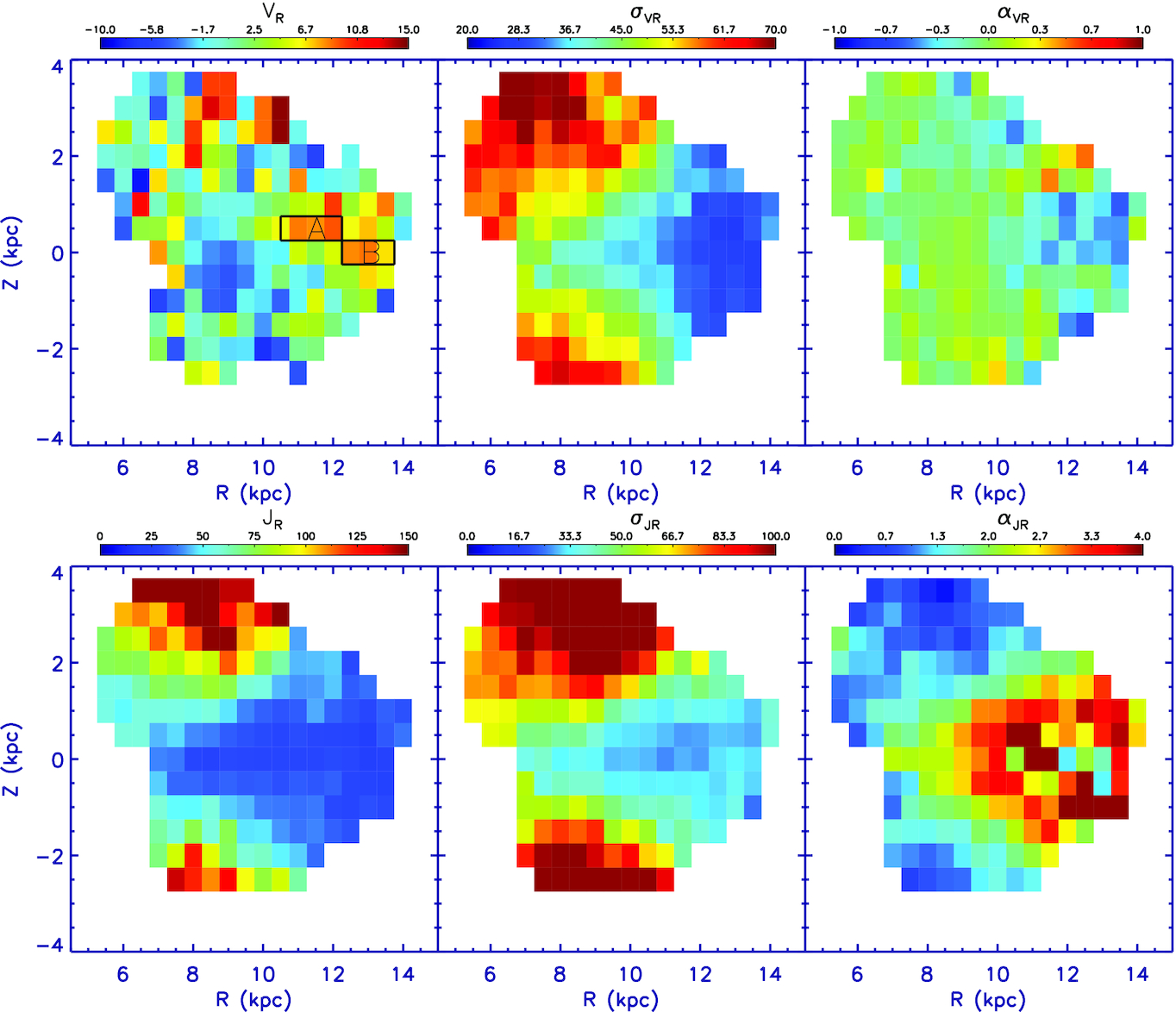
By using a sample of 118945 red giant branch (RGB) stars from the Large Sky Area Multi-Object Fiber Spectroscopic Telescope (LAMOST) and Gaia, Dr. WU Yaqian from the National Astronomical Observatories (NAOC) of the Chinese Academy of Sciences investigated the stellar kinematics of the Galactic disc in 7<R<13 kpc. This work reveals abundant but clear stellar kinematic patterns and structures in the age-metallicity and the R-Z planes.
This research has been published online in the Monthly Notices of the Royal Astronomical Society.
An interesting issue of contemporary astrophysics is the understanding of the formation and evolution of the Galactic disc. Modern large-scale sky surveys, such as the Gaia astrometry survey and a number of Galactic spectroscopic surveys, such as the RAdial Velocity Experiment (RAVE), the Sloan Digital Sky Survey (SDSS), and LAMOST, have revealed unprecedented details and phenomena of the Milky Way disc through the study of the stellar distributions, chemistry and kinematics of millions of stars.
"We all know that the Milky Way is composed of two major components, the thin disc and the thick disc," said Dr. WU Yaqian, the lead author of this study.
In this work, the researchers presented kinematics properties using actions and skewness of the distributions which have not been much explored.
"The skewness of Vφ and Jφ reveals a new substructure at R~ 12 kpc and Z ~ 0 kpc, possibly related to dynamical effects of spiral arms in the outer disc. It deserves further study," said Dr. XIANG Maosheng from the Max-Planck Institute for Astronomy, key co-authors of this study.
"This work is based on her latest work which included 0.64 million LAMOST RGB stars with accurate age and mass estimates," said Prof. CHEN Yuqin at NAOC. "It helps us understand the radial migration process in the Galactic disk based on the largest sample of stars, and it shows the advantage of the LAMOST survey."
This work was supported by the Joint Research Fund in Astronomy, the National Natural Science Foundation of China and the Chinese Academy of Sciences.

Fig. Distributions of the LAMOST RGB stars in the Galactic R–Z plane. (Image by WU Yaqian)

86-10-68597521 (day)
86-10-68597289 (night)

52 Sanlihe Rd., Xicheng District,
Beijing, China (100864)

